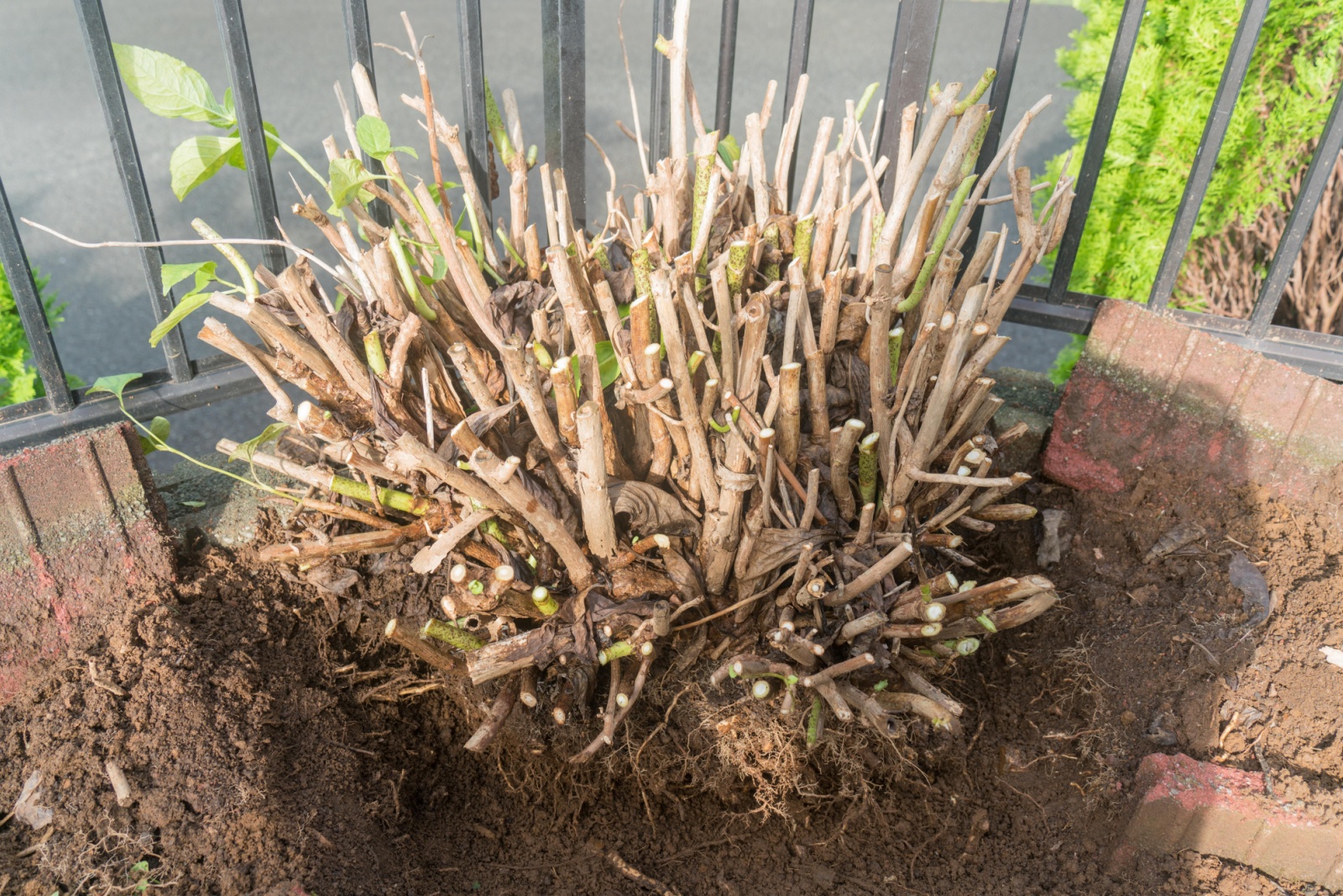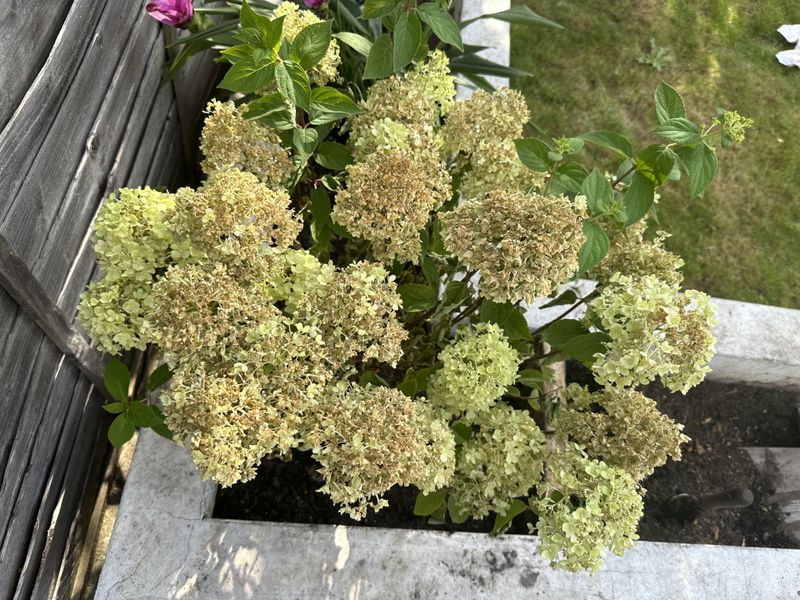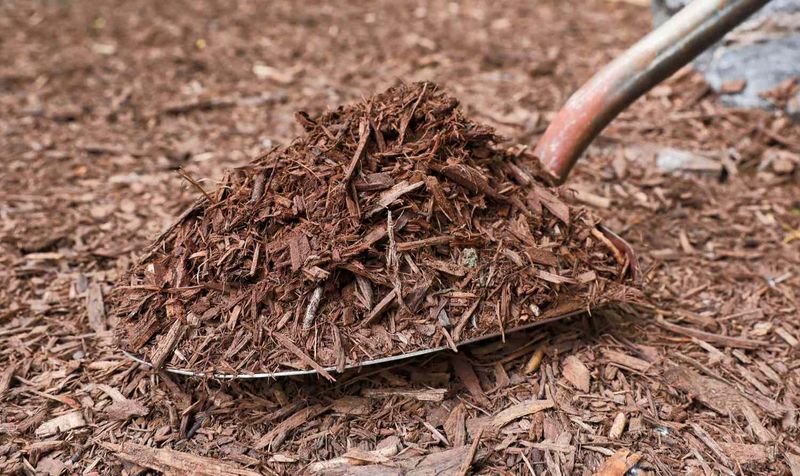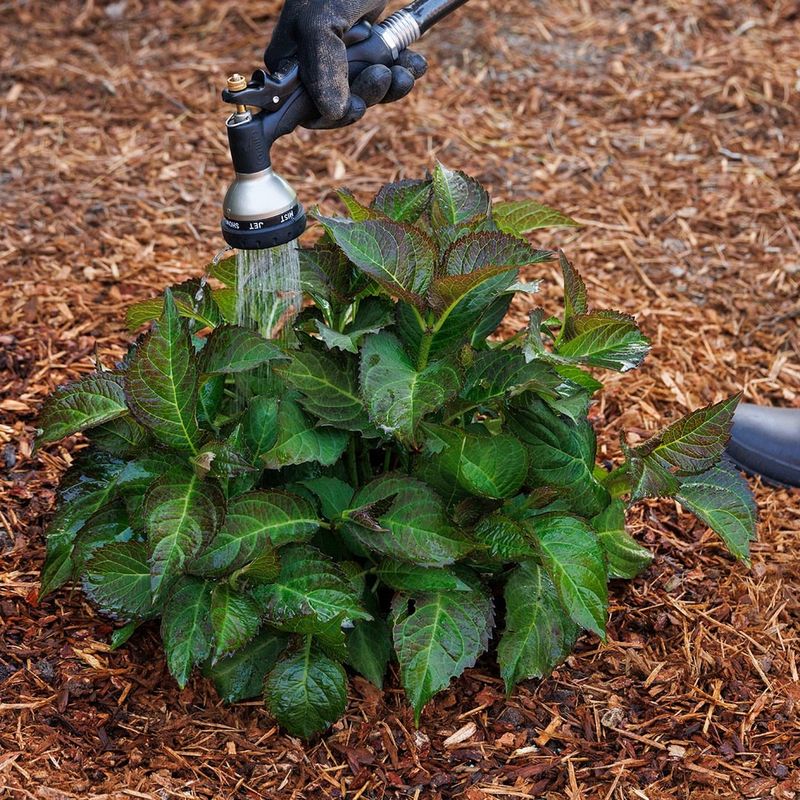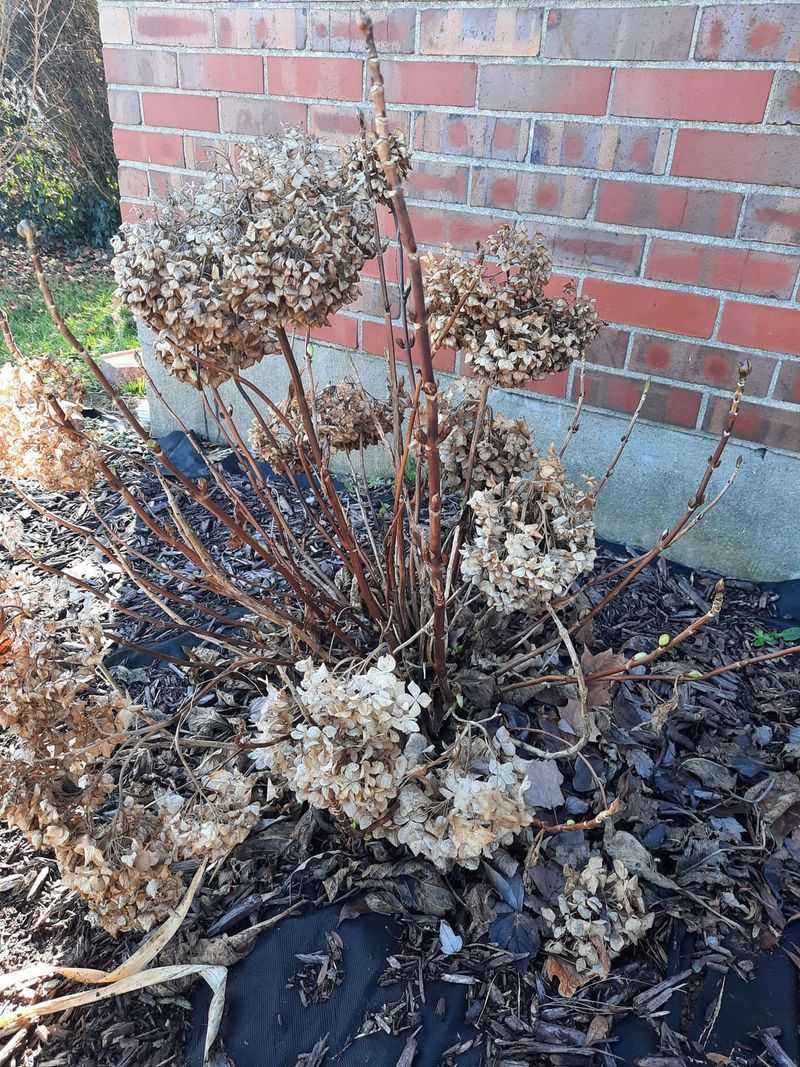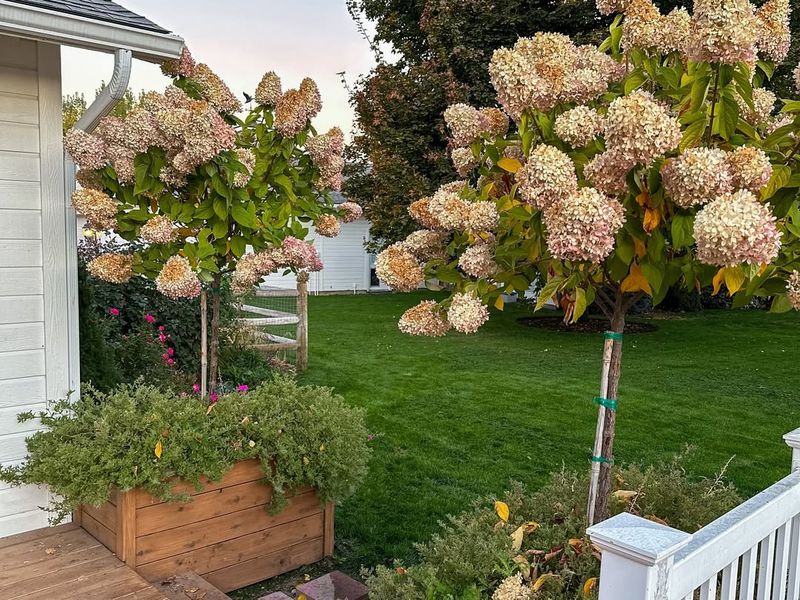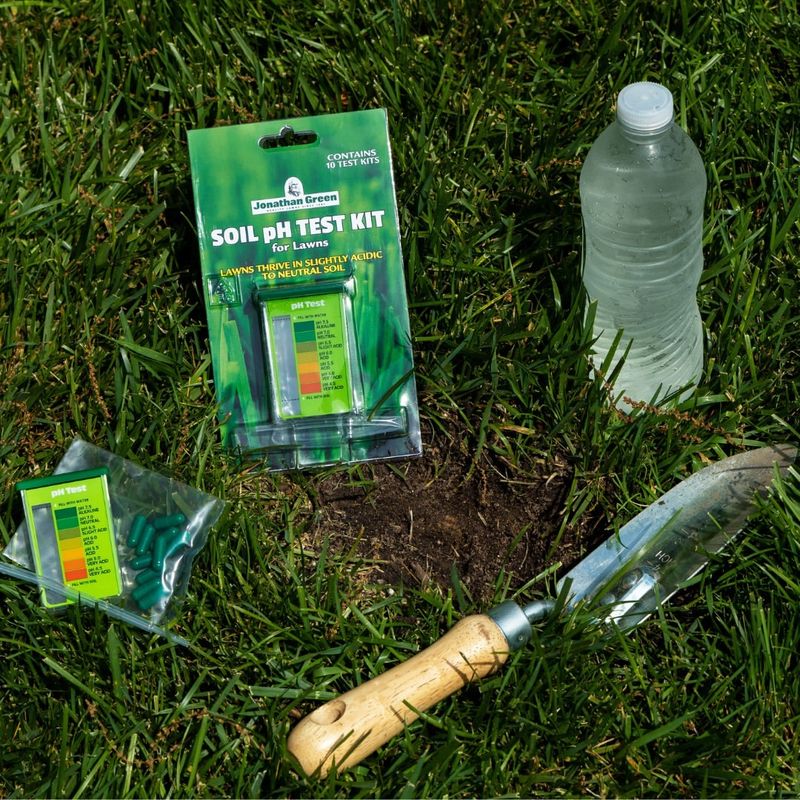October brings cooler weather to Oregon, and your hydrangeas need special attention right now to stay healthy through winter. Taking care of these beautiful flowering shrubs this week can make a huge difference in how they look next spring.
Missing these important tasks could mean fewer blooms or even damage to your plants when the cold arrives.
1. Stop Deadheading And Let Blooms Dry Naturally
Your hydrangeas actually benefit from keeping their dried flower heads on through fall and winter. Those papery blooms provide natural insulation that protects the tender buds underneath from harsh Oregon frost and freezing temperatures.
Old flowers also add beautiful texture to your garden during the dull winter months. Wait until early spring, around March, to trim them off when you can see new growth starting to emerge from the stems below.
2. Apply A Thick Layer Of Mulch Around The Base
Mulch acts like a cozy blanket for your hydrangea roots during Oregon’s chilly winter nights. Spread about three to four inches of organic material like wood chips, shredded bark, or compost in a circle around each plant.
Keep the mulch a few inches away from the main stems to prevent rot and moisture problems. This protective layer helps maintain steady soil temperature and keeps precious moisture locked in where roots need it most throughout the cold season.
3. Water Deeply Before The First Freeze Arrives
Hydrangeas need one final deep watering session before winter sets in across Oregon. Well-hydrated plants handle freezing temperatures much better than thirsty ones, so give them a thorough soaking this week.
Check the soil moisture by sticking your finger two inches down. If it feels dry, water slowly and deeply until the ground around the roots is thoroughly moistened. This helps prevent winter damage and gives your shrubs the moisture reserves they need until spring rains return.
4. Protect Tender Varieties With Burlap Wrapping
Some hydrangea types, especially bigleaf and oakleaf varieties, struggle with Oregon’s occasional harsh winter winds and sudden temperature drops. Wrapping these sensitive plants in burlap creates a windbreak that prevents bud damage.
Create a simple cage using wooden stakes around the plant, then wrap burlap loosely around the outside. Leave the top open for air circulation and remove the protection once consistent spring warmth arrives in late March or April.
5. Hold Off On Heavy Pruning Until Spring
Cutting back your hydrangeas too much right now removes next year’s flower buds and leaves plants vulnerable to winter injury. Most hydrangea varieties set their blooms on old wood formed during the previous growing season.
October is only for removing dead or obviously damaged branches. Save major shaping and pruning work for late winter or early spring when you can clearly see which stems survived and where healthy new growth is appearing on your plants.
6. Test And Adjust Soil pH For Bloom Color
Fall is actually the perfect time to test your soil and make pH adjustments that will affect next summer’s hydrangea colors. Bigleaf hydrangeas produce blue flowers in acidic soil and pink blooms in alkaline conditions.
Pick up an inexpensive soil test kit from any Oregon garden center and check your pH levels this week. Add sulfur to lower pH for blue flowers or lime to raise it for pink blooms. These amendments need several months to work into the soil properly.

